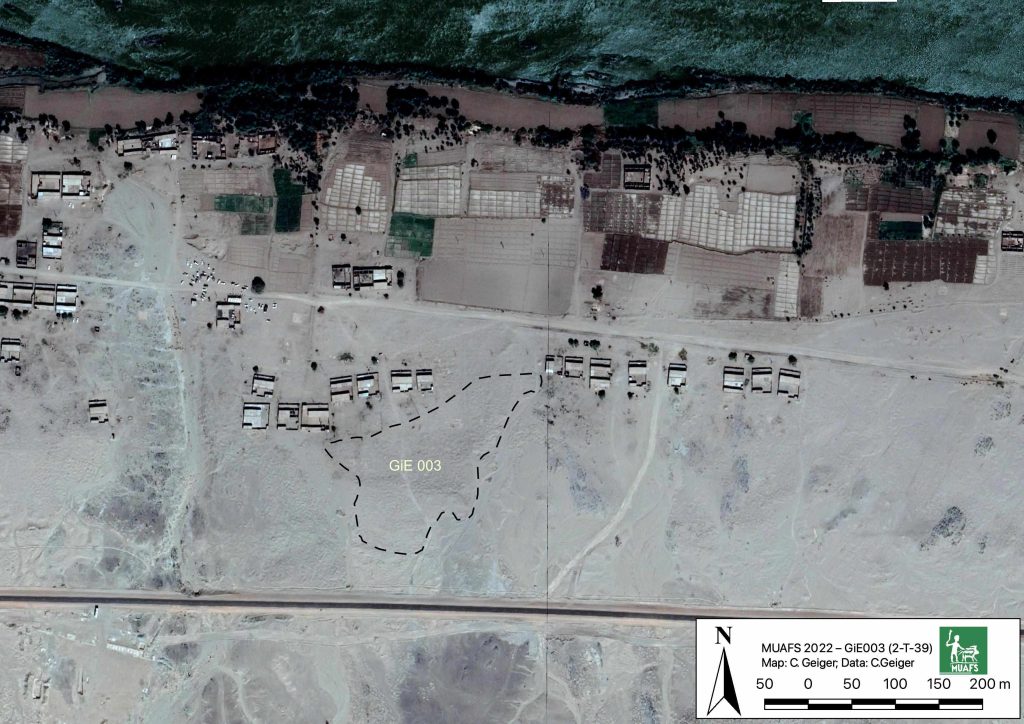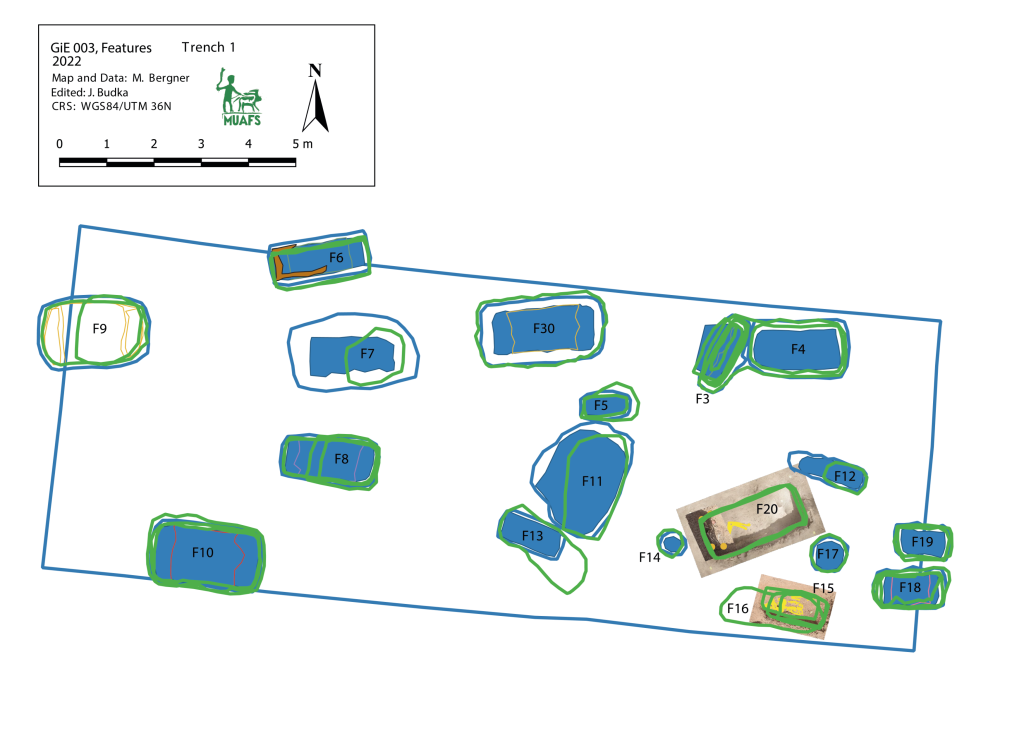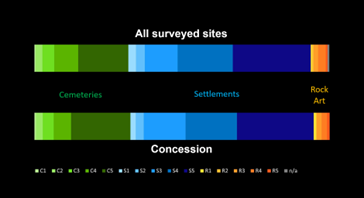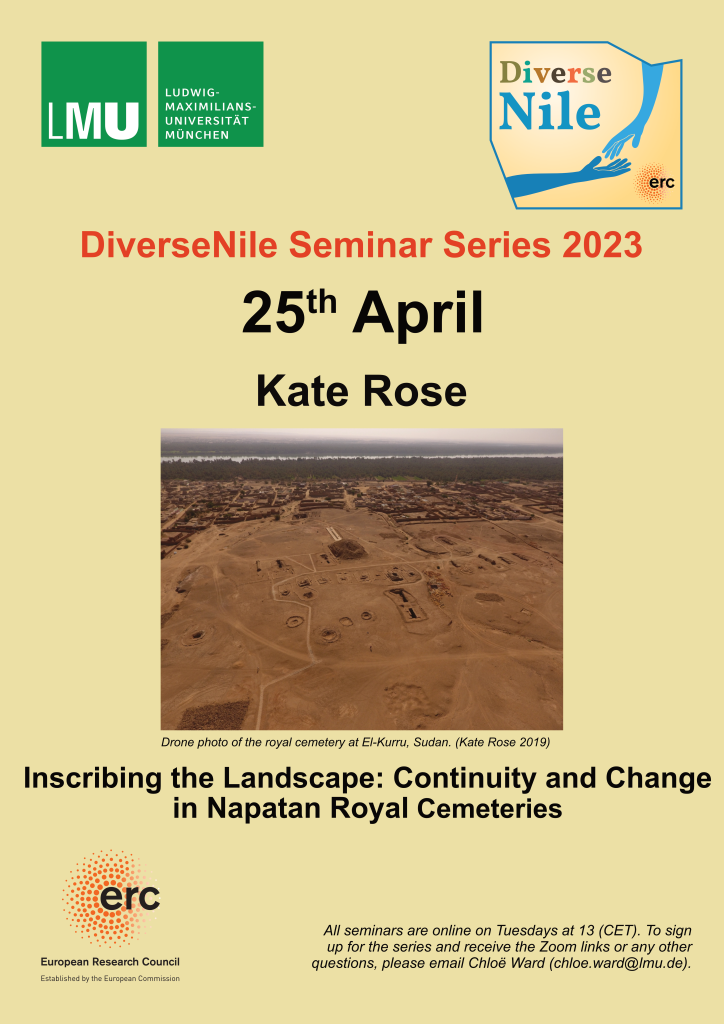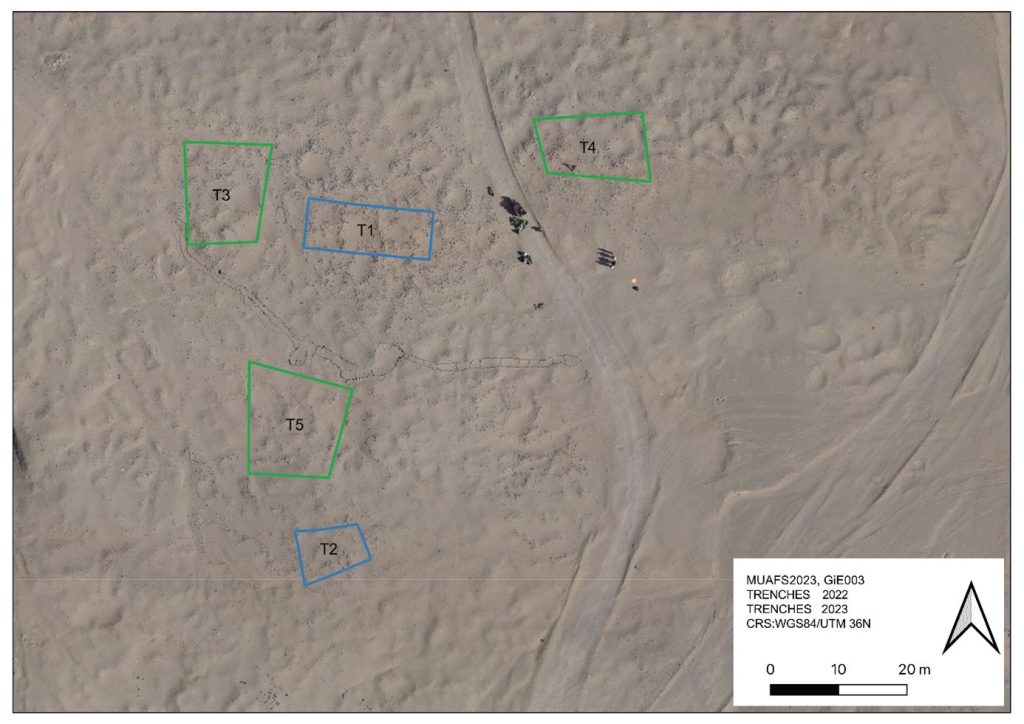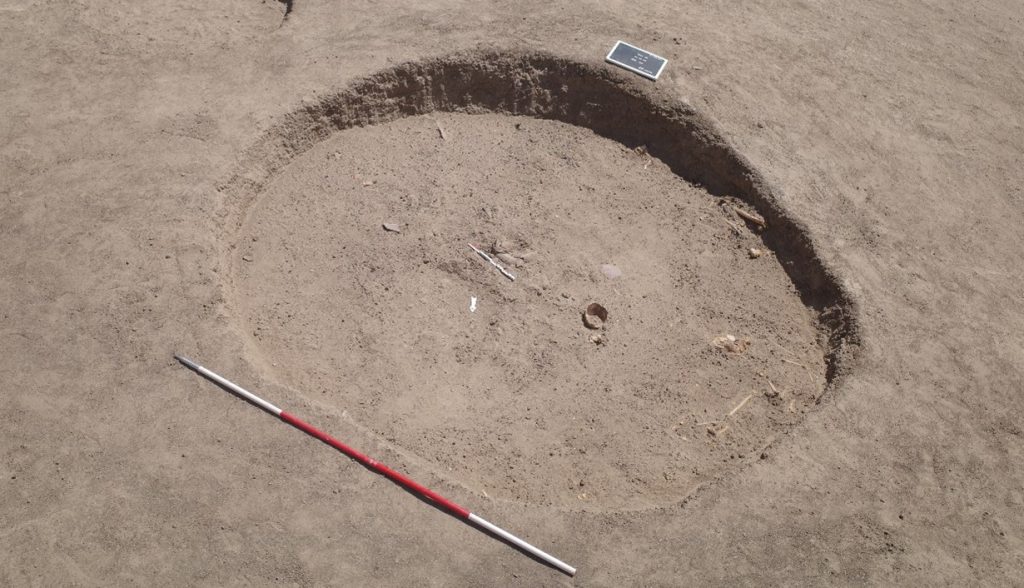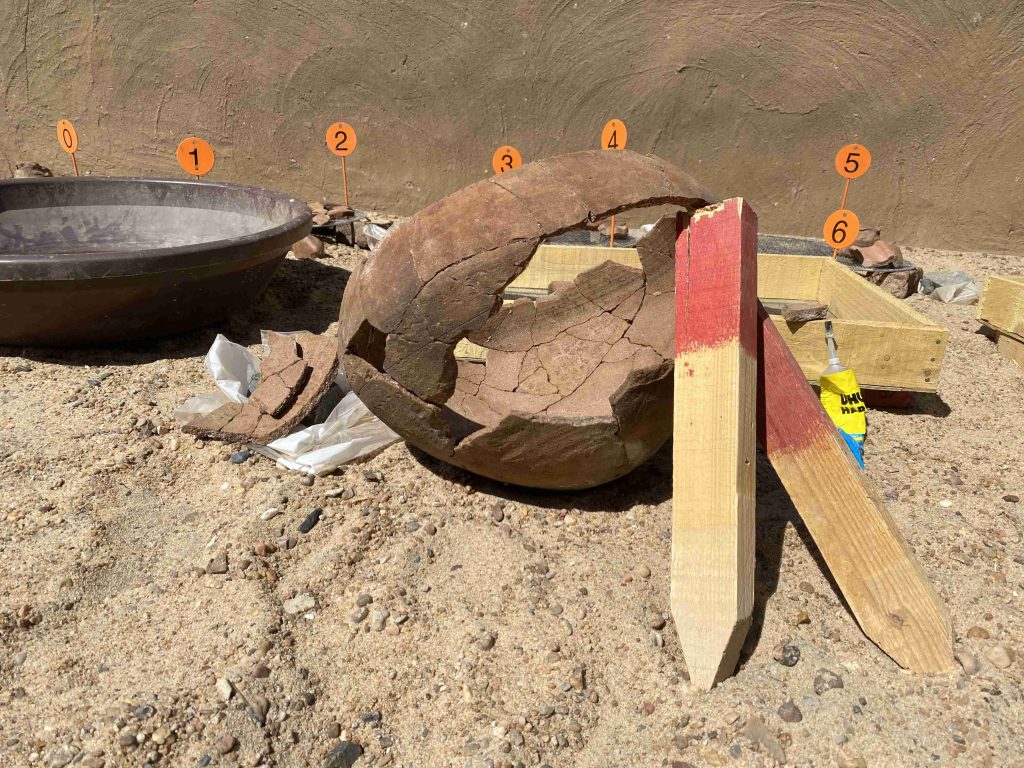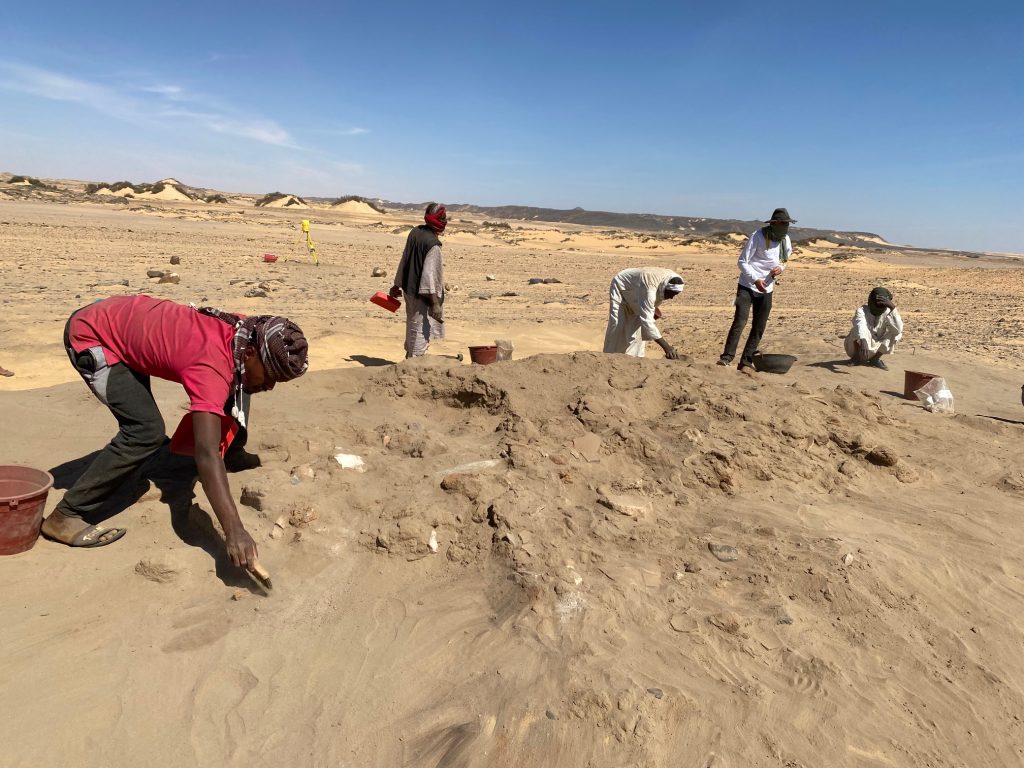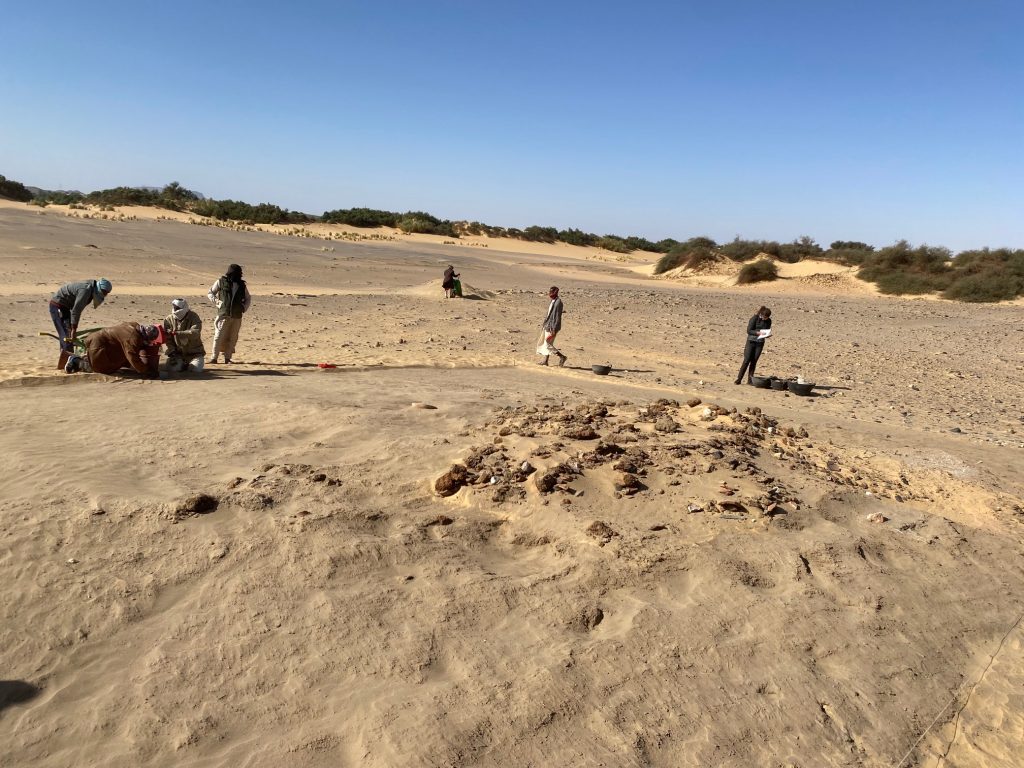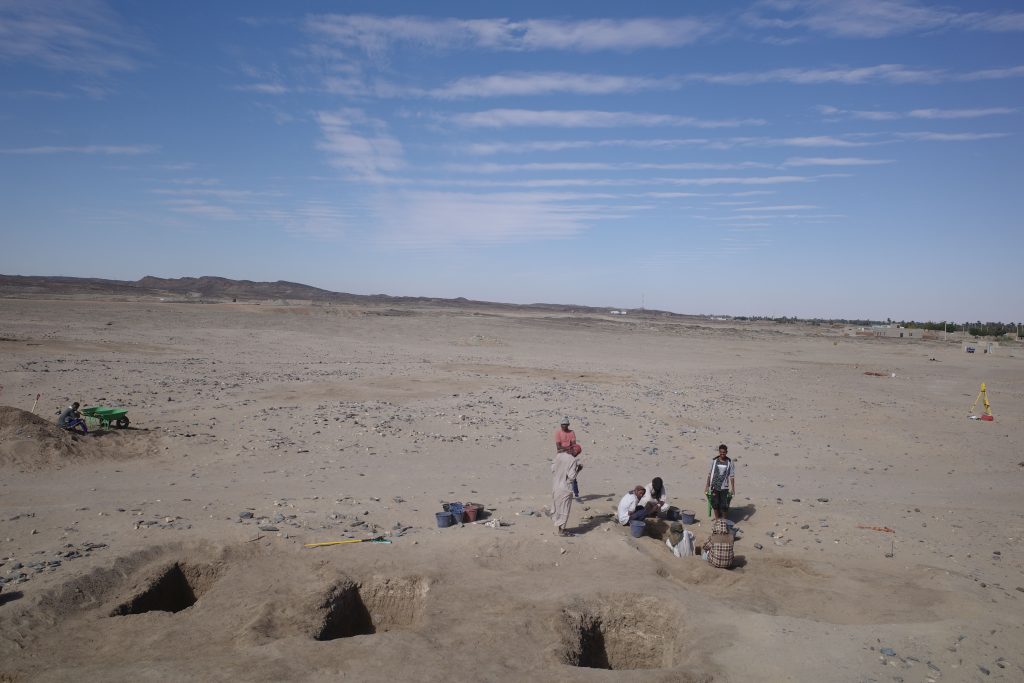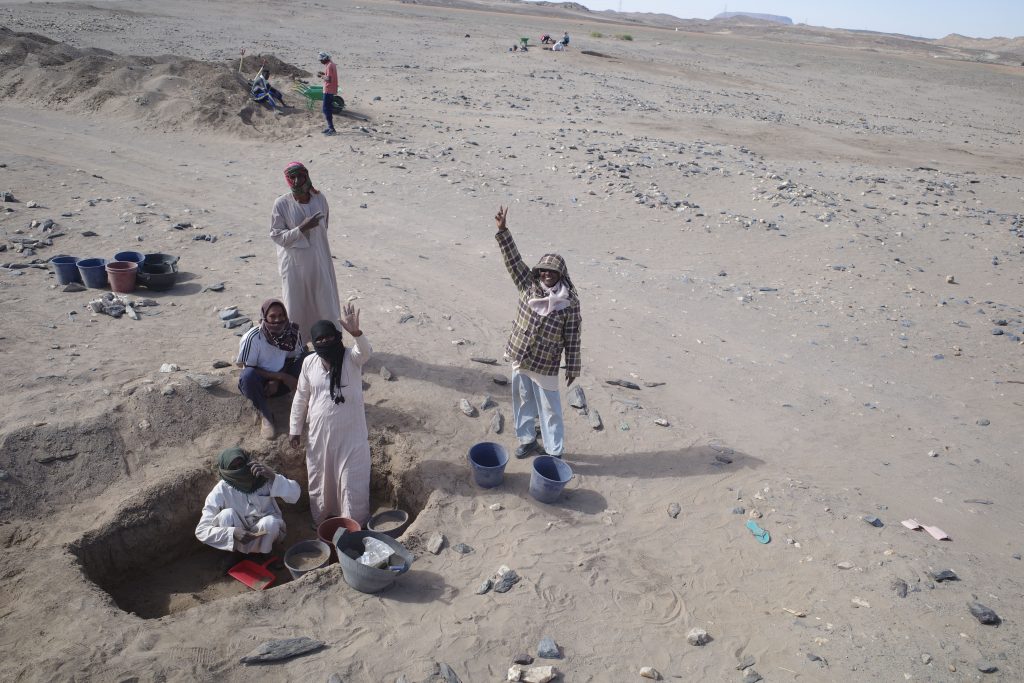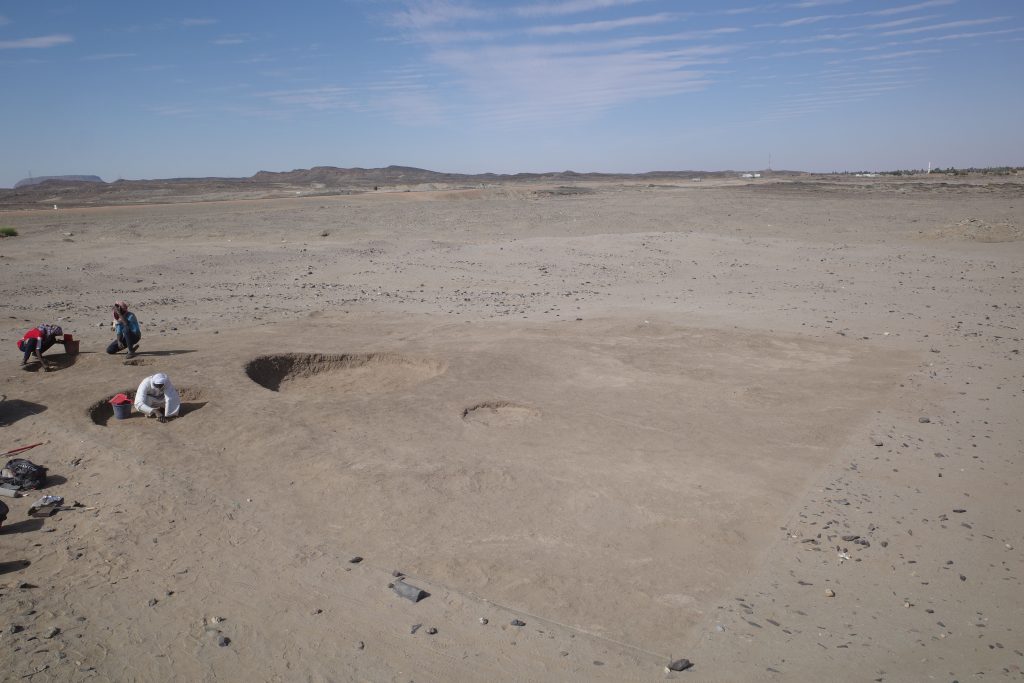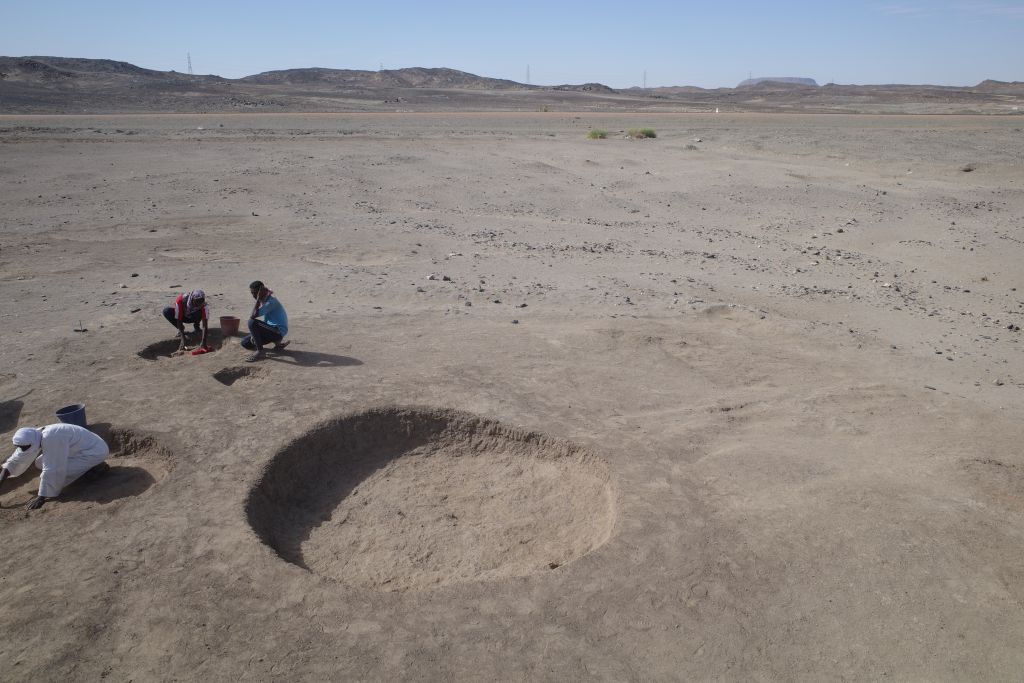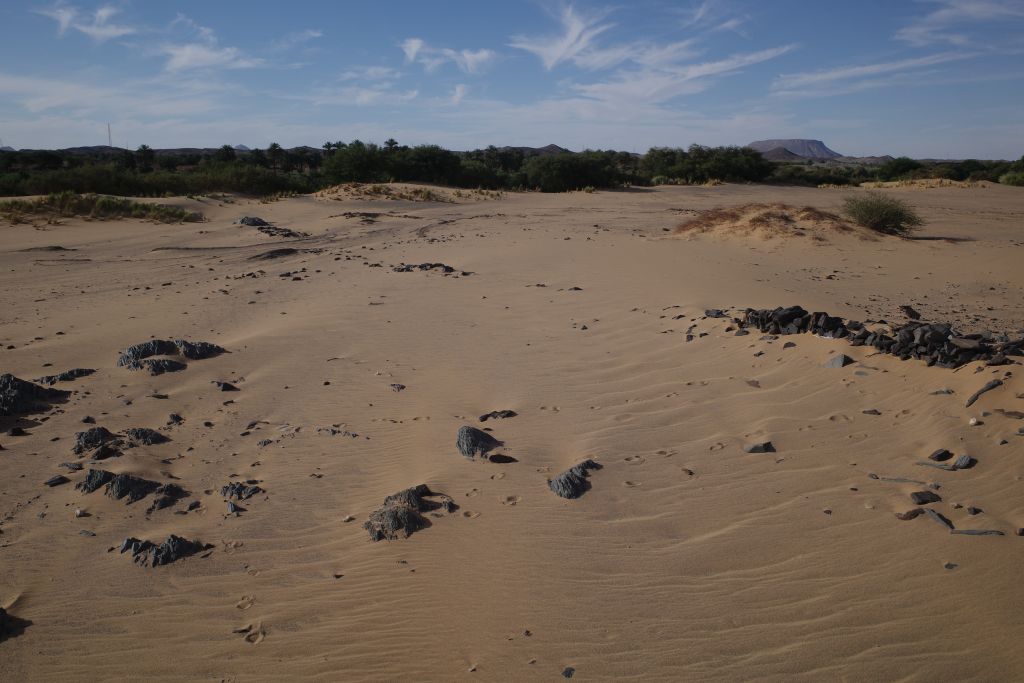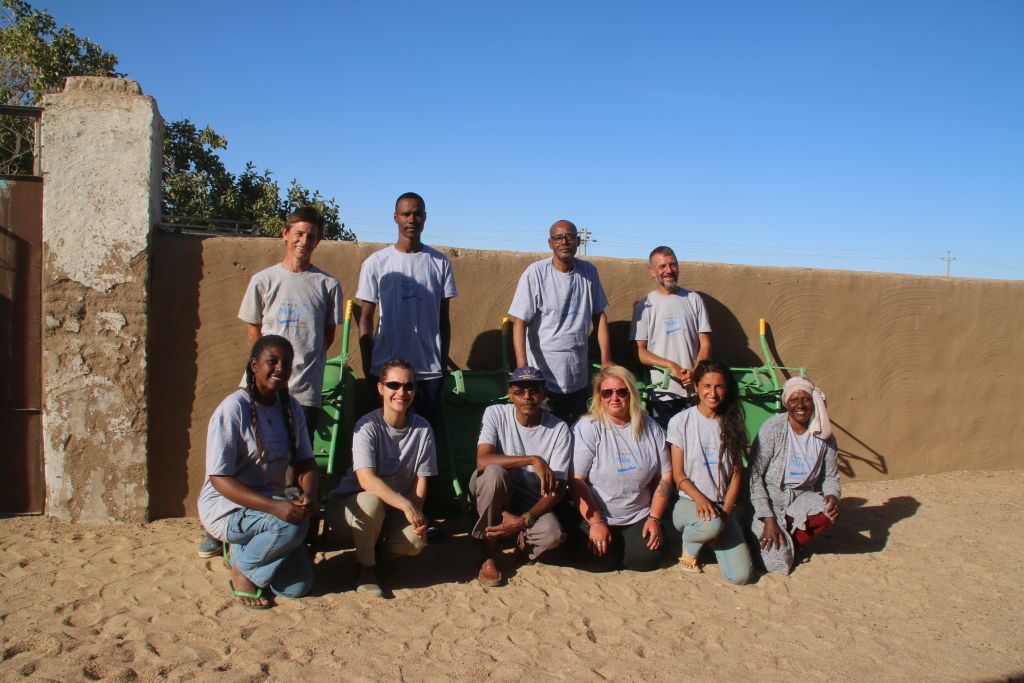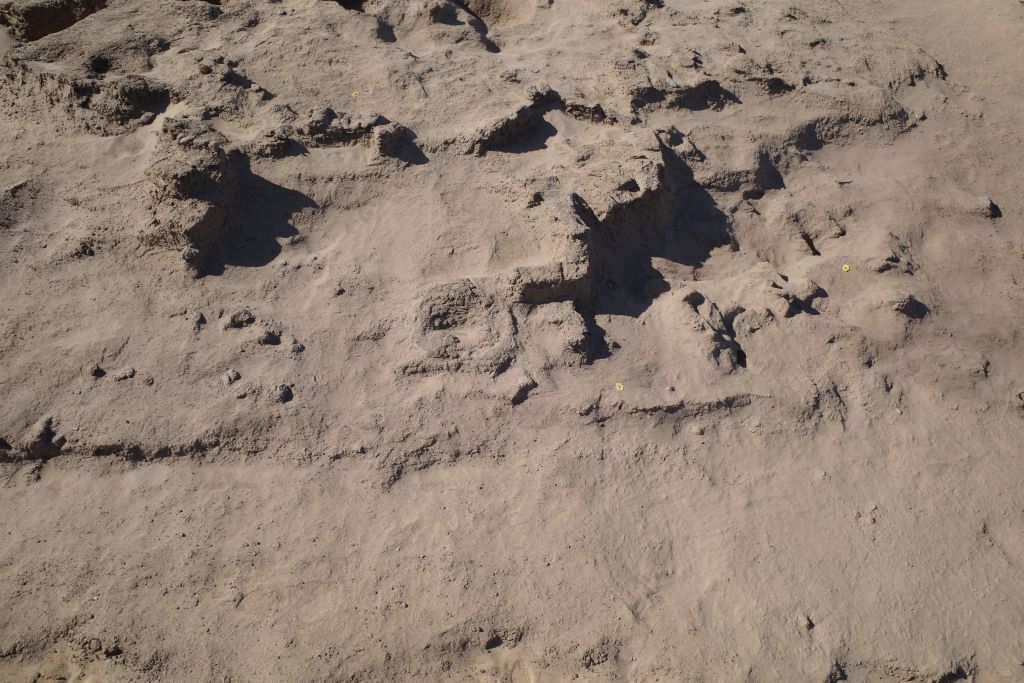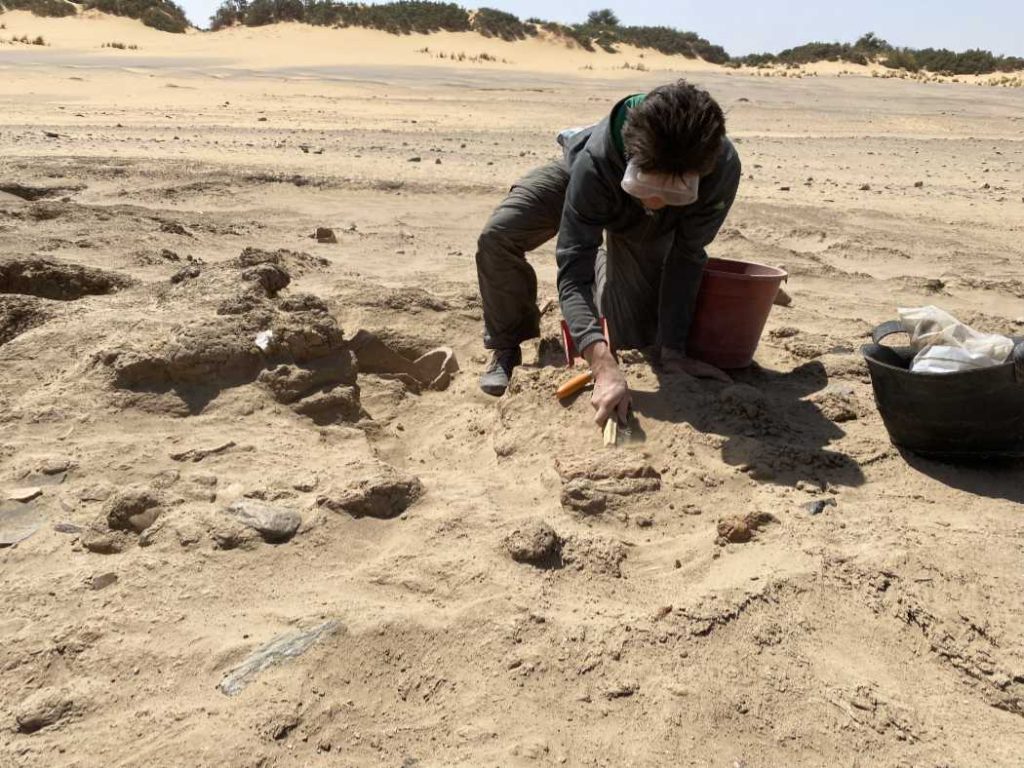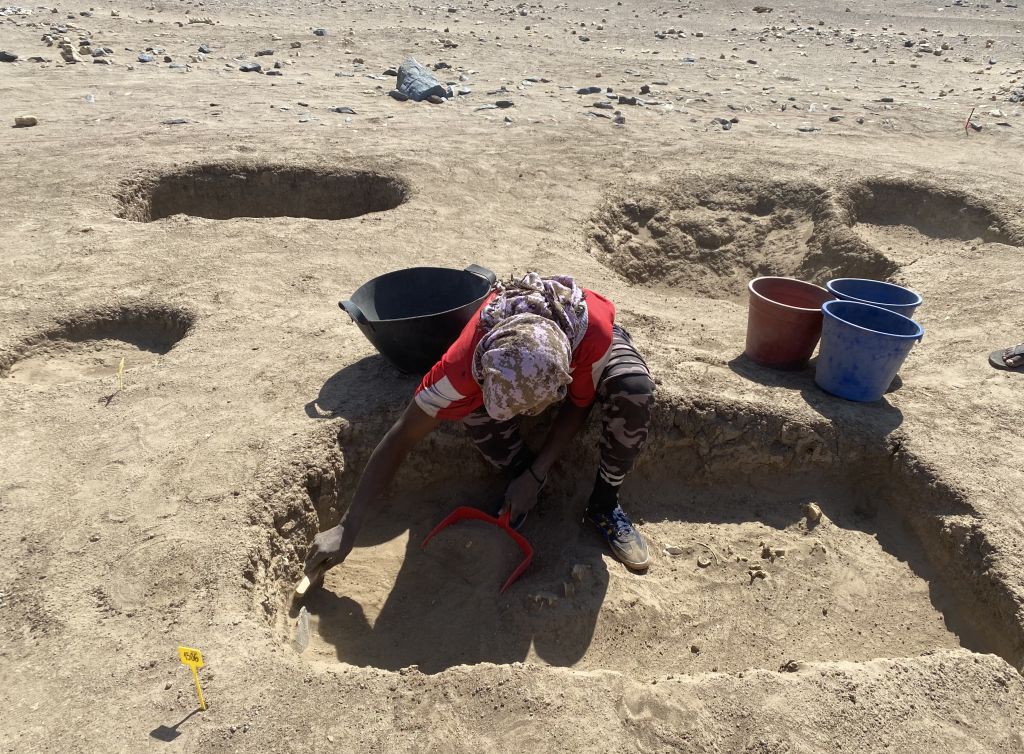As a “landscape” archaeologist, I often have to ask myself, “What do I actually mean when I talk about landscapes?” This is far from a simple exercise, as landscapes seem to defy singular definition. Landscapes are also inherently multidimensional and interact with multi-layered social phenomena and processes such as economy, subsistence, religion, ritual, and political organization. I define landscape as the integration of natural surroundings with cultural phenomena which constitute and are constituted by social relationships. Landscapes are continuously reinvigorated and transformed by the experiences and identities of humans operating within them, and the interactions between humans, animals, ecosystems, climate, and topography. As I delve further into analysis of the landscapes of the Munich University Attab to Ferka Survey region, I try to revisit these central questions; what are landscapes and how can we best approach them from an archaeological and theoretical toolkit?

Landscape archaeology tackles the nuances of culture, environment, memory, meaning, and place-making. Landscape perspectives have evolved to recognize the permeability and relativity of landscapes, in that societies imbue their own sense of place and time on spaces (Anschuetz et al. 2001). This is a realization that extends beyond archaeology, as works from the realms of architecture, design, environmental studies, geography, history, psychology, and others reiterate the same principles. As the architect Amos Rapoport writes, “People seem to shape and interact with built environments/material culture primarily through meaning and this seems to hold over time, cross-culturally, and in all kinds of environments, contexts, and situations” (1990: 42). Anschuetz et al. (2001) argue for the adoption of a unified landscape perspective, which accounts for the theoretical and methodological development of the field and builds an epistemology of landscapes. The authors claim, “a landscape approach complements traditional archaeological space and time systematics through its processual and scientific means of analysis while at the same time integrating human history and agency into their constructions” (187). This perspective unites the main concerns and objectives of the two most dominant theoretical schools within the discipline of archaeology, Processualism (New Archaeology) and Post-processualism.
As someone who also is particularly interested in cemeteries, I often think about the intersections between landscapes and death. Neither death, nor landscapes were static components of ancient life. Cemeteries can be reconceptualized within archaeology as “mortuary landscapes.” Mortuary landscapes are not isolated phenomena; monuments of death scattered throughout the landscape. They, in concert with the natural landscape, are physically and ideologically transformative embodiments of long term social and cultural processes. Many works have explored this reconceptualization of cemeteries as inextricable from their natural and cultural surroundings (for examples pertaining to North Africa, see Stone and Stirling 2007 and Richards 1999, 2005). My working definition of mortuary landscapes is that they are built landscapes of burial, consisting of tombs, temples, and other constructions dedicated to death, strategically integrated with natural surroundings. These landscapes are complex, hubs of activity that develop and change over time due to natural and cultural processes. We must consider mortuary landscapes as active and dynamic spaces for the maintenance of identities of the dead and living.
Many past studies since the mid-20th century have situated a discussion of landscape archaeology within the context of the culture, history, geography, and environment of ancient Nubia and modern-day Sudan (Ahmed 1984; Caneva 1988; Edwards 1989; Garcea and Sebastiani 1998; Grzymski 2004; Hinkel 1994; Trigger 1965, 1982; Welsby 1998; Williams 1985). With respect to cemeteries, landscapes have also been integrated into studies from Neolithic to post-Medieval Nubia (Bashir 2021; Costanzo et al 2021; Emberling 2012; Weschenfelder 2015). There is a need for more studies that evaluate diachronic relationships between mortuary practices and landscapes using systematic, spatial methodologies. I intend to delve further into the application of systematic and spatial methodologies to Nubian contexts in a future blog post.
A framework that I think is helpful in achieving this mortuary landscape approach is “inscribing” the landscape. Inscription as a concept and a process has been discussed within the field of archaeology broadly. For example, in David and Wilson’s edited volume, Inscribed Landscapes: Marking and Making Place, landscape inscription is presented as a two-fold process: 1) the physical marking of the natural environment through monument construction such as rock art, and 2) and the social engagement of people with their environment that embodies landscapes with memories and “anchors people in place” (2002: 6). In studies of Nubia, the process of inscribing is discussed with reference to identity formation (Buzon et al 2016: 285) as well as landscape formation (Ambridge 2007). While there are many ways to describe this concept, I want to emphasize landscape inscription as a continuous process of imprinting and reproducing social meaning and relationships onto the physical environment through interactions and alterations that create a material signature. This includes the construction of architecture, and the use and manipulation of natural resources and features in creating patterns. Inscribing the landscape is akin to creating a dialogue between material culture and natural surroundings to translate the immaterial aspects of social relationships and phenomena. The landscape is the canvas on which the images of social meaning are drawn. This does not imply that social meaning can only be viewed or understood in one way. Interpretations will differ according to the perspectives, objectives, and biases of the inscribers and the viewers. Landscape inscription does not have an end point, so long as humans are interacting with their surroundings.
As archaeology for decades has attempted to reconcile structure and agency within the past, I conceive of landscapes as both agents and products of actions, processes, and changes. Furthermore, considering the process of death and veneration of the dead adds an interesting dimension to the landscape equation. In many cultures, such as the ones under investigation by the DiverseNile Project, death is obviously not viewed as an end result or product of a life. It is the continuation, an open door to another stage of being, an unfinished sentence. Landscapes, to me, exist in a similar plane, always in a process of becoming, never serving as a conclusion.
Ultimately, we hope that through a social biography approach to landscape (Budka 2020: 57; Kolen and Renes 2015) that delves into the interconnectedness of people, environment, material culture, and all organisms we can elucidate further patterns in landscape use and management over time; and identify more trajectories of continuity and change the inscribed landscapes of the Attab to Ferka region.
References:
Ahmed, K. A. (1984) Meroitic Settlement in the Central Sudan: An analysis of Sites in the Nile Valley and the Western Butana. Oxford: British Archaeological Reports, International Series 197.
Ambridge, L. (2007) ‘Inscribing the Napatan Landscape: Architecture and Royal Identity’ in N. Yoffee (ed.), Negotiating the Past in the Past: Identity, Memory, and Landscape in Archaeological Research. Tucson: The University of Arizona Press, pp. 128-154.
Anschuetz, K.F., Wilshusen, R.H. and Scheick, C.L. (2001) ‘An Archaeology of Landscapes: Perspectives and Directions,’ Journal of Archaeological Research, 9(2), pp.157-211.
Bashir, M.A.S. (2021) ‘Medieval and Post-Medieval Archaeology in the Sudan: A Study of Two Cemeteries at Mura, Northern State,’ The Algerian Journal of Humanities, 3(1), pp. 178-201.
Budka, J. (2020) ‘Kerma Presence at Ginis East: The 2020 Season of the Munich University Attab to Ferka Survey Project,’ Sudan & Nubia, 24, pp.57-71.
Caneva, I. (1988) El Geili: The History of a Middle Nile Environment, 7000 B.C.–A.D. 1500. Oxford: British Archaeological Reports, International Series 424.
Costanzo, S., Brandolini, F., Idriss Ahmed, H., Zerboni, A. and Manzo, A. (2021) ‘Creating the Funerary Landscape of Eastern Sudan,’ PLoS ONE, 16(7), pp. e0253511–e0253511.
David, B. and M. Wilson (eds.) (2002) Inscribed Landscapes: Marking and Making Place. Honolulu: University of Hawai’i Press.
Edwards, D. (1989) Archaeology and Settlement in Upper Nubia in the 1st Millennium A.D. Oxford: British Archaeological Reports, International Series 537.
Emberling, G. (2012) ‘Archaeological Salvage in the Fourth Cataract, Northern Sudan (1991 2008)’ in M. Fisher, P. Lacovara, S. D’Auria, and S. Ikram (eds.), Ancient Nubia: African Kingdoms on the Nile. Cairo: American University in Cairo Press: pp. 71-77.
Garcea, E. and R. Sebastiani (1998) ‘Advantages and Limitations of Surveys: The Case of the Napatan Region,’ Archéologie du Nil Moyen, 8, pp. 55-83.
Grzymski, K., (2004) ‘Landscape Archaeology of Nubia and Central Sudan.’ African Archaeological Review, 21(1), pp.7-30.
Hinkel, M. (1994) ‘The Water Reservoirs in Ancient Sudan’ in C. Bonnet (ed.), Etudes nubiennes. Conférence de Genève. Actes du VIIe Congrès International d’études nubiennes. Volume II. Genève: Mission Archéologique de l’Université de Genève au Soudan, pp. 171-175.
Kolen, J. and J. Renes (2015) ‘Landscape Biographies: Key Issues’, in J. Kolen, J. Renes and R. Hermans (eds.), Landscape Biographies: Geographical, Historical and Archaeological Perspectives on the Production and Transmission of Landscapes. Amsterdam: Amsterdam University Press, pp. 21-47.
Rapoport, A. (1990) History and Precedent in American Design. New York: Plenum Press.
Richards, J. (1999) ‘Conceptual landscapes in the Egyptian Nile valley’ in Ashmore, W. and B. Knapp (eds.), Archaeologies of Landscape: Contemporary Perspectives. Cambridge: Cambridge University Press, pp. 83-100.
Richards, J. (2005) Society and Death in Ancient Egypt: Mortuary Landscapes of the Middle Kingdom. Cambridge: Cambridge University Press.
Trigger, B. G. (1965) History and Settlement in Lower Nubia. New Haven: Yale University, Department of Anthropology (Yale University Publications in Anthropology 69).
Trigger, B. G. (1982) ‘Reisner to Adams: Paradigms of Nubian cultural history’ in J.M. Plumley (ed.), Nubian Studies. Warminster, pp. 223–226.
Welsby, D. (1998) ‘Roman Military Installations Along the Nile South of the First Cataract,’ Archeologie du Nil Moyen, 8, pp. 157–182.
Weschenfelder, J. (2015) ‘The Terminal Neolithic Cemetery in the Funerary Landscape of MOG034, Mograt Island, Sudan,’ Der Antike Sudan. Mitteilungen der Sudanarchäologischen Gesellschaft zu Berlin, 26, pp.145-152.
Williams, B. (1985) ‘A Chronology of Meroitic Occupation Below the Fourth Cataract,’ Journal of the American Research Center in Egypt, 22, pp. 149–195.

